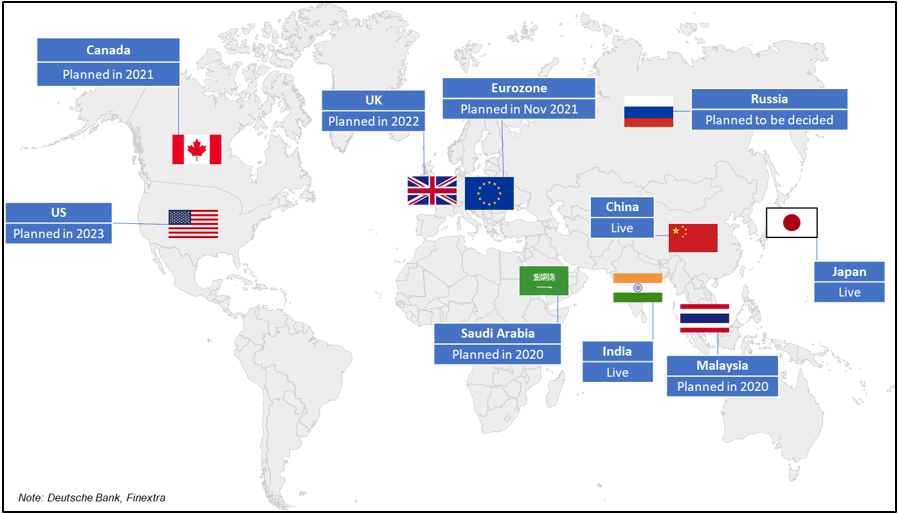ISO 20022: The Future of Payments
Published on 01 Sep, 2020

ISO 20022 is an upcoming standard that would considerably improve the efficiency of payments and establish checks, enabling companies to transfer payments seamlessly. It is the global language for electronic payments, which would help systems worldwide to communicate and transmit significantly more data through payments. This standard would not only streamline international cross-border payments, but also drastically mitigate the reconciliation issue.
Financial institutions exchange information among themselves and with customers to conduct business. Currently, we rely on computers to process information; hence, it is important for the sender and receiver of a message to understand decoding such information.
The growth of internet usage over the years, as well as other technological advancements, led to a rise in disparate message formats. This posed challenges for systems to decode information, thereby causing the whole process to be time consuming. Thus, a standardized language for payments messaging had to be created, which paved the way for ISO 20022.
International Organization for Standardization (ISO), in 2004, published the ISO 20022 global standard for payments messaging by creating a common language for messages related to payments across the globe. This enabled common understanding and interpretation, faster processing, and improved reconciliation. Majority of the countries plan to implement and complete the migration to the ISO 20022 standard over the next two years.
ISO 20022 organizes financial messages in business areas recognized in the industry by using a unique identifier of 4-character codes, called business area codes. The catalogue of ISO 20022 covers 20 business areas, with over 400 messages covering business areas such as ATM card transactions (CATP), Payment Initiation (PAIN), Securities Trade (SETR), Securities Settlement (SESE), and Foreign Exchange Trade (FXTR).
PAIN is the most common message used for transactions such as credit transfers, salaries, and cheque payments. For instance, if person A in India wants to make a payment of USD 1,000 to a person B in China, then A’s bank would send pain.001.001.10 (denotes business area.message identifier.variant.version) to B’s bank, with details on the currency, amount, and B’s account number, among other information, to initiate the payment.
The four parts are explained below:

- Message type: This refers to the business domain of the message. For instance, in the example mentioned above, “pain” refers to Payments Initiation.
- Message sub-type: This is a code allocated to the message pertaining to a specific business domain. As seen in the example mentioned above, “001” refers to an instruction for Customer Credit Transfer Initiation.
- Variant: It is a simplified version of a message, including a subset of the attributes within the message; in the example mentioned above, the variant is “001”.
- Version: This refers to any element of a message that is added, deleted, or modified; in the example mentioned above, it is denoted as “10”.
ISO 20022 is based on a three-layer concept:
- Top layer – Provides the key business information for the activity to take place
- Middle layer – Provides logical messages or information needed to perform a specific business activity, independent of syntax
- Bottom layer – Deals with the syntax, i.e., the structure of statements in a computer language
Key approaches used by banks to integrate ISO 20022:
- One-step migration or Big Bang migration: In this method, all the participants go live simultaneously. The participants need to be ready to go live on the specific day, with compatibility implementations being made. Example: Eurozone
- Multi-step migration or Like-for-Like migration: In a phased manner, data fields and messages are gradually moved. After the initial preparation period, existing data fields can be migrated to the new format in a “like-for-like” approach. Example: The UK, The US, etc.
Planned implementation across different regions of the world:

Impact of ISO 20022:
This payments standard will significantly impact the overall business process of organizations. However, for easy understanding, we can categorize these as under:
- Operations: This standard will have a direct impact on a bank’s payments architecture and IT systems, thereby changing the payments process of the bank. It will also have an indirect impact on business processes, including liquidity management, accounting, and reconciliation, as new data components will be implemented.
- Infrastructure: ISO 20022 will contain almost 2–3-fold more data than the current legacy formats. Hence, banks will have to undertake a detailed assessment of their systems and databases to ensure that they are properly equipped to process large data volumes at higher speeds for real-time payments, compliance checks, intraday liquidity management, and fraud prevention and detection to gain maximum benefits from implementing this standard.
- Customers: Failure to undergo a smooth transitioning process can have a severe impact on the customers’ payment transactions, thereby negatively affecting the banks.
Benefits and challenges of ISO 20022:
Benefits
- Increase in efficiency due to standardization of data formats and faster processing of transactions
- Potential cost savings post implementation on payment processing, data analytics, investigations, reporting, etc.
- Easy digital compliance due to data automation
- Improved customer services, thereby increasing customer satisfaction
Challenges
- Data loss amid transitioning from the co-existence period
- Significant one-time cost on building IT infrastructure to implement this standard
- Lack of expertise to handle the transitioning process
Outlook after implementation:
- The ISO 20022 framework will encourage banks to build payment transaction data and use common vocabulary and a common set of syntaxes under a uniform approach.
- The framework would help facilitate end-to-end automation from invoicing to liquidity management for corporate banks owing to the standardized formats and processes.
- Financial institutions can aim to create value by leveraging the benefits provided by ISO 20022, such as using the data generated to create new analytical models and crafting personalized offers for customers.
- Thus, the onus is on banks and financial institutions to benefit from this opportunity or risk being left out in the future.


